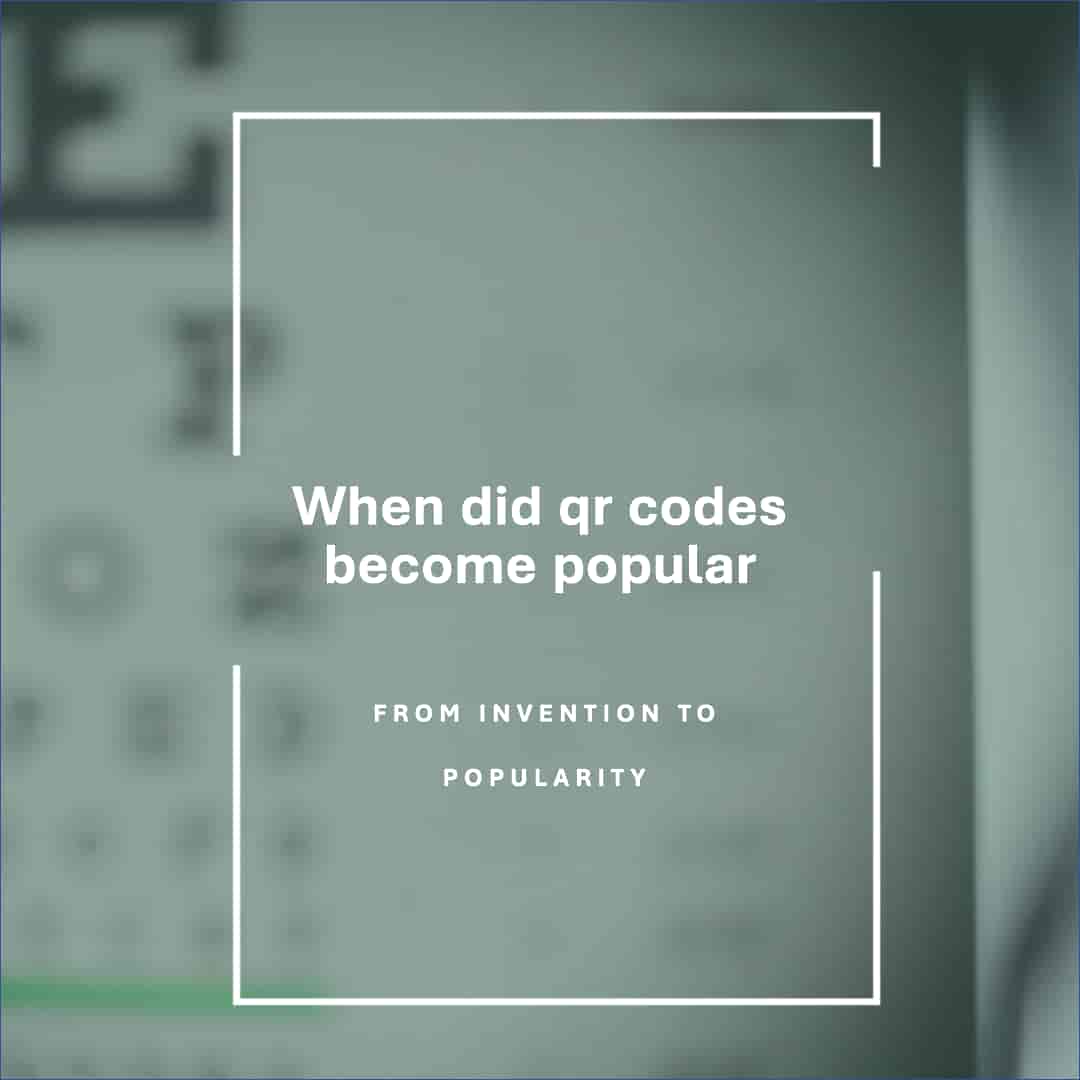QR (Quick Response) codes are ubiquitous today, found everywhere from product packaging to digital tickets. But when did QR codes become popular? This article will chart the evolution of QR codes, examining their origins, their surge in popularity, and their continued relevance in our tech-driven world.

The Genesis of QR Codes
QR codes were initially conceived in Japan by a company named Denso Wave, a subsidiary of Toyota, in 1994. The primary intention was to track vehicles during the manufacturing process swiftly. These codes were designed to store a significant amount of information and could be read at high speeds.
The Slow Global Uptake: Early 2000s
For many years after their inception, the use of QR codes was predominantly confined to Japan. The rest of the world seemed somewhat reluctant to embrace this technology. However, as smartphones became more widespread in the early 2000s, the potential of QR codes started to be recognized globally. Businesses began to see the value of bridging the physical and digital worlds, offering consumers quick access to digital content.
The Surge in Popularity: Late 2000s to Early 2010s
As smartphones became more affordable and widespread, the utility of QR codes expanded. Brands began to integrate QR codes into their advertising campaigns. Magazines, billboards, and even TV commercials began featuring these unique, scannable codes.
In 2011, a striking revelation from a ComScore report highlighted the emerging importance of QR codes in the American digital landscape: over 14 million U.S. mobile users actively engaged with these quick-response codes, scanning them using their mobile devices. Such a figure not only underscores the swift integration of QR technology into daily routines but also signals its potential as an indispensable tool for businesses seeking to connect in real-time with their audiences.
This rapid adoption reflects a broader shift towards instantaneous digital interactions, a trend which, when harnessed correctly, offers profound opportunities for marketing and communication strategies. As technological ecosystems evolve, the pivotal role of QR codes in bridging the tangible and digital realms cannot be understated.
A New Age of Utility: The 2020s and Beyond
Undoubtedly, the 2020s witnessed a meteoric rise in the ubiquity of QR codes, a resurgence largely attributed to the unexpected challenges posed by the COVID-19 pandemic. As the virus compelled the global community to rethink traditional modes of interaction, contactless methodologies like QR codes transitioned from being mere technological conveniences to vital tools in promoting public safety.
Restaurants, retailers, and even event organizers rapidly adopted these codes to provide essential services without direct contact. This adaptation not only minimized potential virus transmission but also showcased the adaptability and resilience of businesses in the face of unprecedented adversity.
Businesses began to employ QR codes for menus, e-tickets, and even health check-ins. Governments worldwide started using QR codes for health applications and contact tracing efforts. This era marked a period when QR codes transitioned from being a novel marketing tool to a critical component in daily operations for countless businesses and government entities.
Applications Driving QR Code Popularity
While the question "When did QR codes become popular?" has a multifaceted answer, it's clear that the variety of applications they can be used for has driven their widespread acceptance.
-
Mobile Payments: Services like Apple Pay and Google Wallet utilize QR codes to facilitate transactions.
-
Event Ticketing: Many events have transitioned to digital tickets, which often employ QR codes for entry.
-
Health and Safety: As mentioned, the pandemic led to a boom in QR code use for health checks and contact tracing. Read more about advantages of qr codes in healthcare sector.
The Future of QR Codes
QR codes are undergoing a transformative evolution, integrating cutting-edge technologies like Augmented Reality (AR) and Virtual Reality (VR). This shift transcends their traditional role in straightforward information dissemination; they're now gateways to vibrant, multi-dimensional experiences. Imagine scanning a code and being instantly submerged in an AR tutorial or a VR showroom, an experience hitherto unattainable through conventional methods. This metamorphosis paves the way for QR codes to be indispensable tools, bridging our tangible reality with the digital realm in compelling ways.
Conclusion
To answer the question, "When did QR codes become popular?", one must examine the myriad ways in which our digital and physical worlds have converged over the past few decades. From their humble beginnings in Japanese automotive factories to their current status as an indispensable tool in countless applications, QR codes have cemented their place in our global society. Their evolution serves as a testament to the ever-blurring lines between the digital and tangible realms, and their future looks brighter than ever.